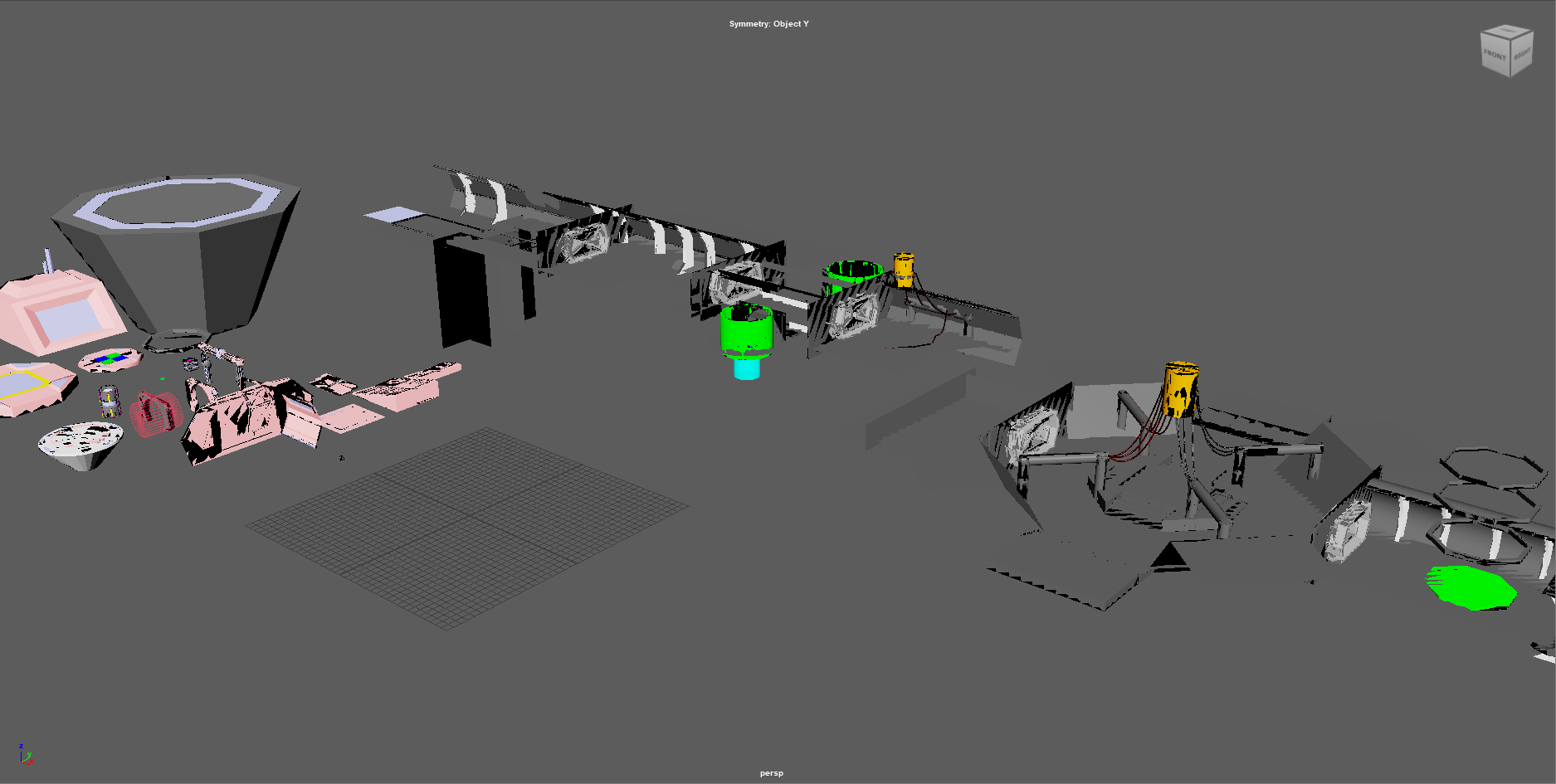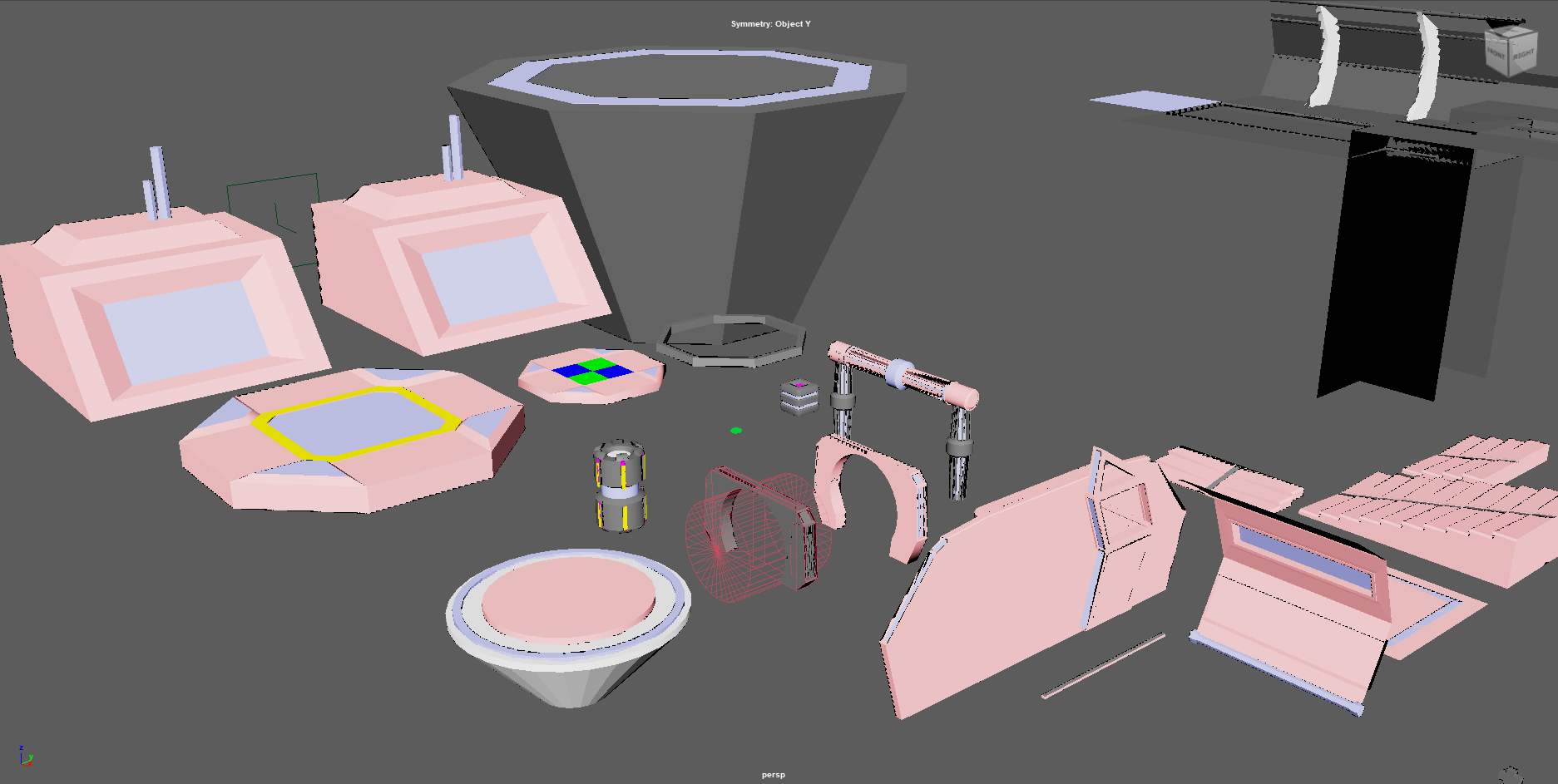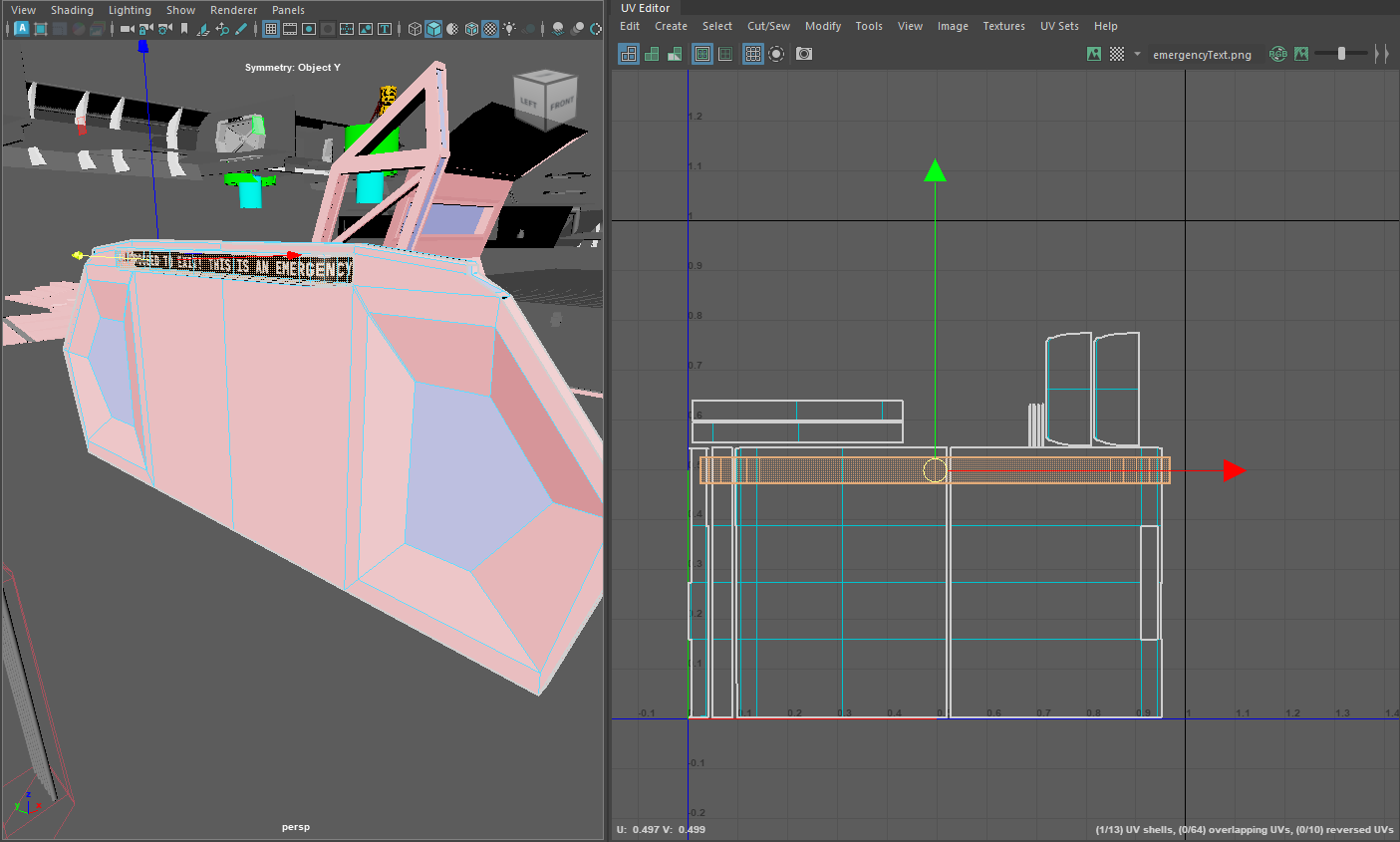
CHRONOSYNTHESIS
A co-op action-adventure puzzle game inspired by It Takes Two. Featuring 6 unique levels, each a famous location in the city of Montréal, QC, including Mont-Royal, and the Museum of Fine Arts.
MY ROLE
Lead Level Design, Blockout, Set Dressing, Game Design, Cinematics, SFX
TIMELINE
3 months, Academic Project
TOOLS
Unreal Engine 5, Maya, Substance Painter, Reaper
TEAM
20 students; simulation production instructor: Katia Zenava
PRE-PRODUCTION
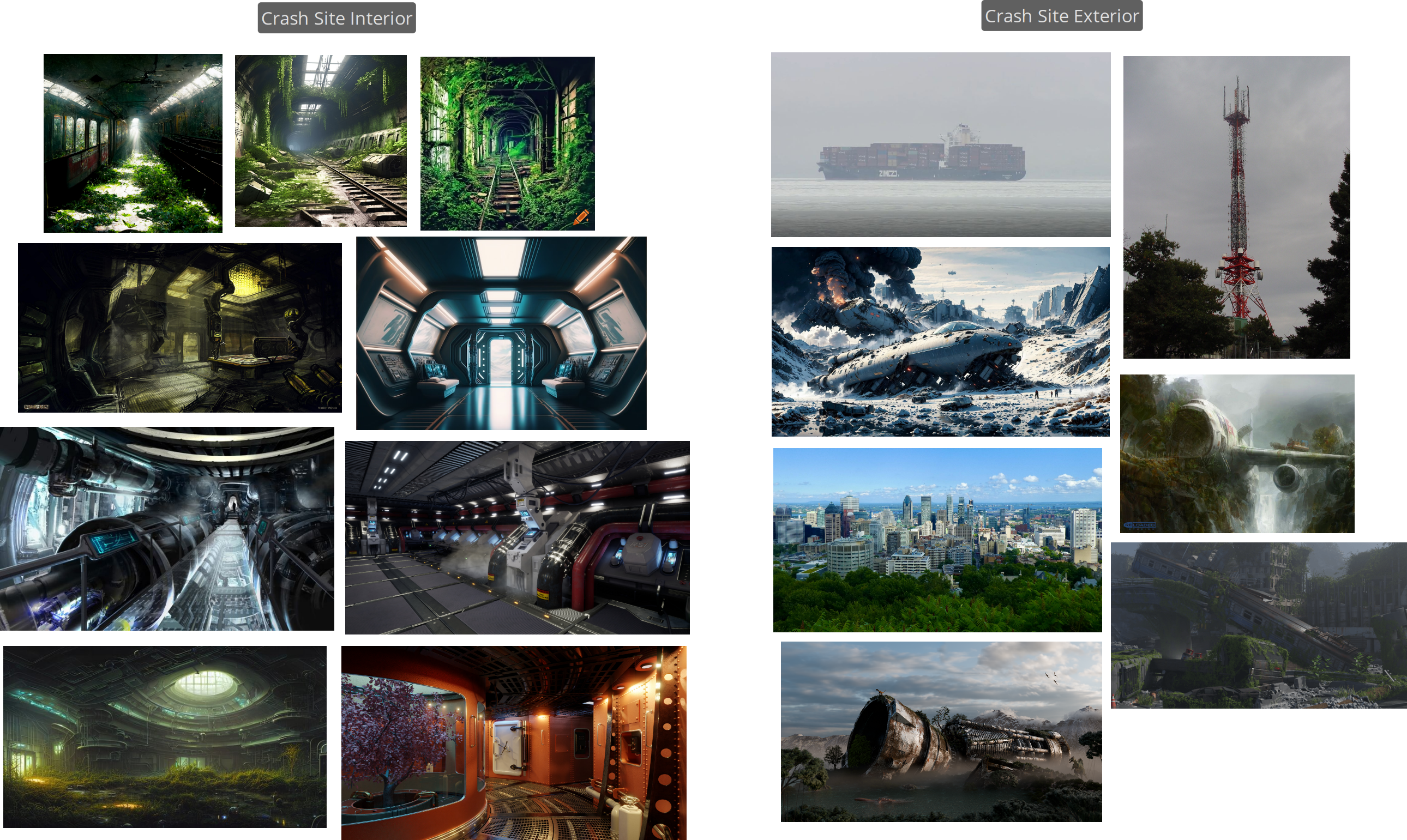
GATHERING REFERENCES
Any material, from images, videos and even music were gathered very early to both use as reference and inspire the team.
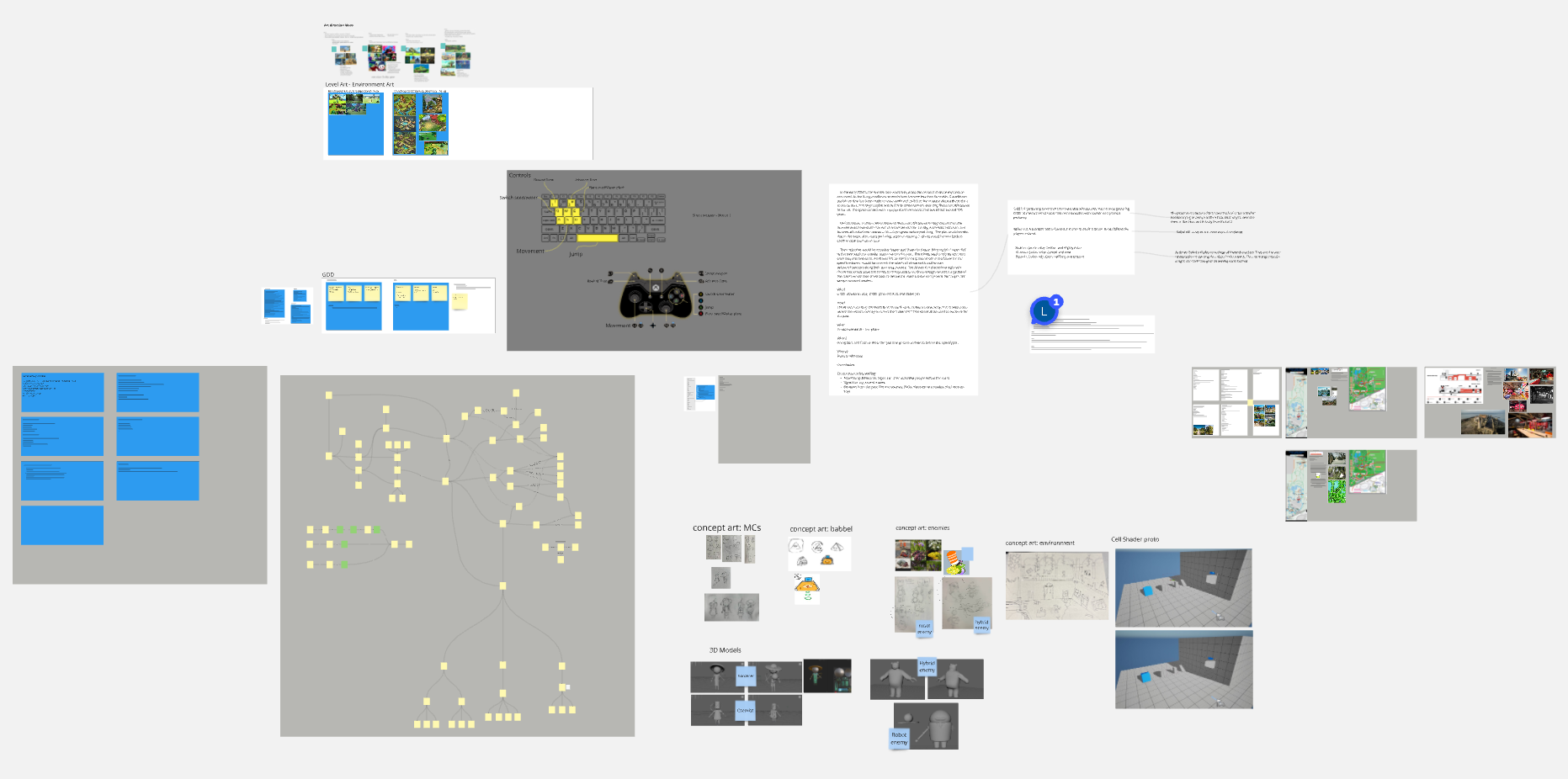
COLLABORATIVE IDEATION
Miro served as our team's virtual "whiteboard." We used it to brainstorm the base mechanics for our game, the art direction, and initial level ideas, locations, etc.
As production began, we moved into a Jira project and kept Miro for quick brainstorming sessions.
LEVEL DESIGN PILLARS
Cinematic
Use level sequences to script "level events", cinematic moments (e.g. an explosion that blocks the path forward) which don't interrupt gameplay, to surprise and delight the player.
Take advantage of the isometric top-down camera by creatively employing descending verticality to give the player insights into upcoming combat zones, platforming challenges, etc.
Descent
Symmetry
Provide an equal number of opportunities for fun with each character's unique abilities and playstyle in mind.

LEVEL PLANNING
LEVEL BEATS
Introduction cutscene
Level start and narrator, Babel
Level event - ship explosion
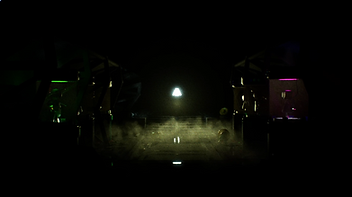


Combat training
Explosives and revive tutorial


Combat encounter - pylon crabs

Exterior crash site intro cutscene
Planting and watering tutorial
Radio tower cutscene



Level event - cliff ledge drop
Combat encounter - new enemy
Level ending - combat & platforming



CRASH SITE INTERIOR
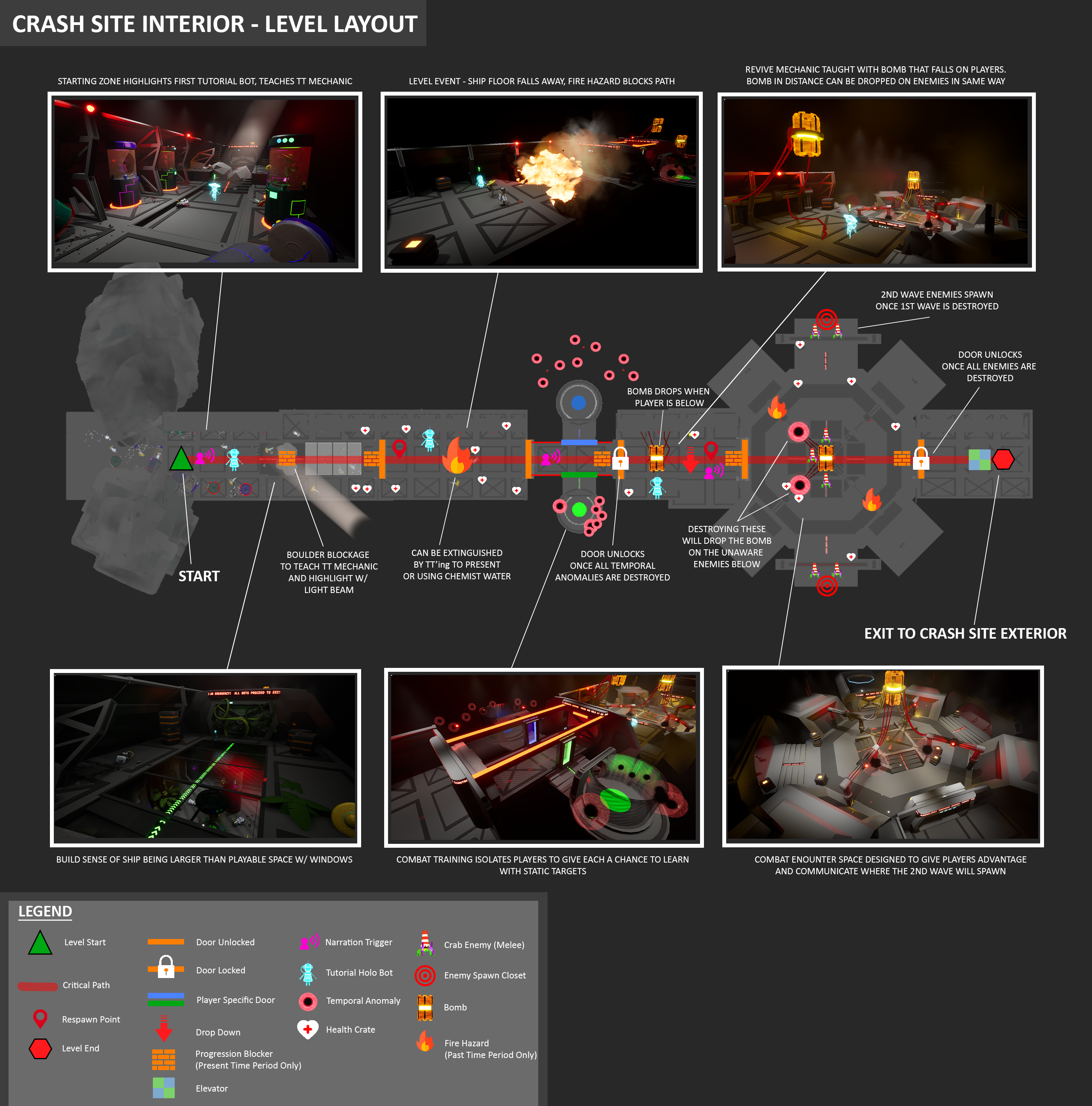
My goal with the Crash Site Interior was to sequentially and logically introduce our mechanics with opt-in tutorials (bot holograms).
I aimed to make the tutorialization process as seamless and unobtrusive as possible by using level sequences. Examples include the ship floor dropping away and a fire hazard blocking the forward path. The fire can be extinguished using time travel or with the Chemist's water spray.
The darkness surrounding the playable space of this area made for a nice contrast and reveal when players reach the Crash Site Exterior.
Click to enlarge
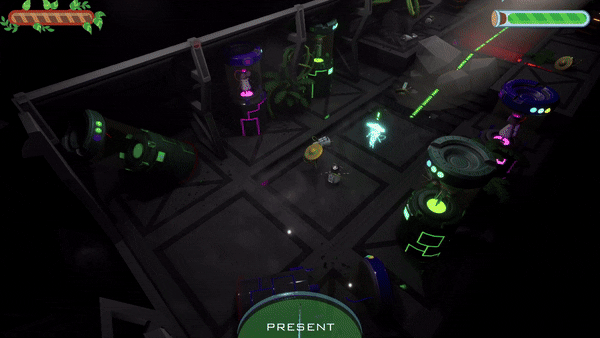
START SIMPLE
The first space has one objective. Teach players about the time travel mechanic.
I highlighted the rubble blocking their path forward with a beam of light. This also communicates that they are within a vessel, and that a world exists outside.
The blockage can be removed by time travelling from present > past, the time period in which the ship had just crashed.

TEACH COMBAT USING TARGETS
I created the temporal anomalies to serve as targets for players to test out their combat abilities.
Each training area is sealed with a player specific door to ensure that each has the opportunity to destroy targets.
The Chemist has a long range water hose and must focus on accuracy to destroy spinning targets at a medium range.
The Gardener has a close range seed shotgun and learns that the closer they are to a target, the more seeds hit per shot, and the more cumulative damage they deal.
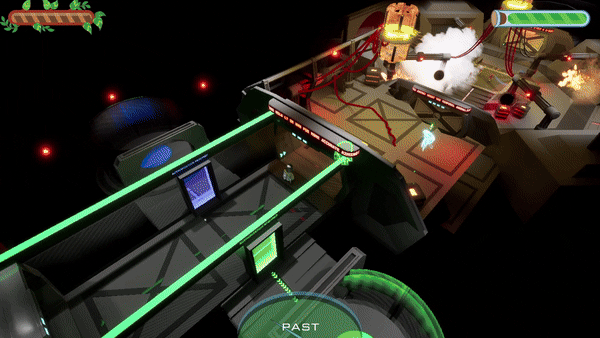
PROVIDE VANTAGE POINTS PRIOR TO COMBAT
A bomb drops on the player(s) and will always kill 1 of them. It teaches the revival mechanic. Revival was added as a way to keep the players in the action and enhance the co-op experience by helping one another.
This ledge also serves as a great vantage point into the first combat encounter.
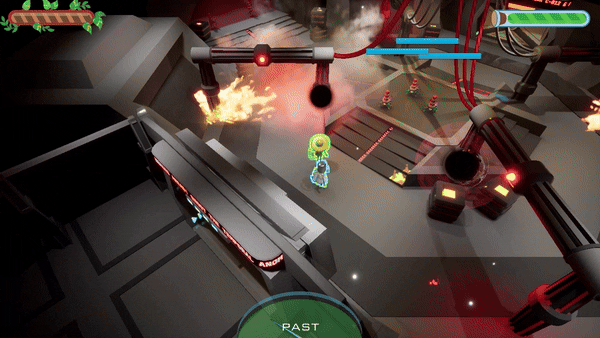
REWARD OBSERVANT PLAYERS
An observant player might recognize the yellow bomb hanging over the central platform with 3 pylon crab enemies. It's the same type of bomb which fell on them a moment earlier.
Red cables which terminate in two temporal anomaly targets communicate how to drop the bomb.
CRASH SITE EXTERIOR
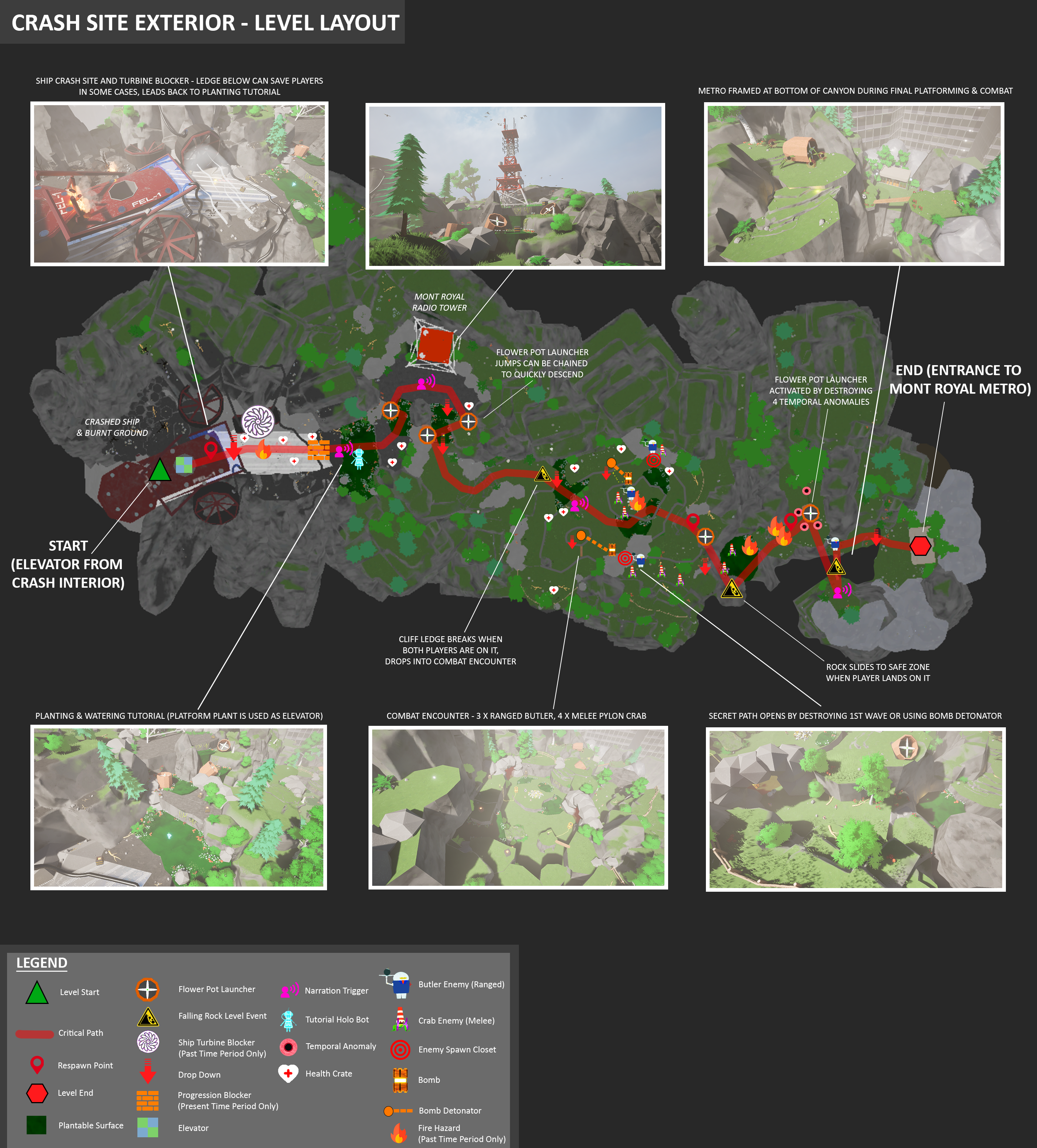
My primary goal with the Crash Site Exterior was to reward the player with spectacular vistas of the Montreal skyline and Mont Royal radio tower.
Having the crash site at the top of the mountain enabled me to continue working with the strengths of our camera setup, in this case a descending player path.
I kept things fresh by scripting additional mechanics that made sense for the level space. These include the falling rock level sequences, flower pot launchers, and detonators for the bombs placed in the main combat zone.
Click to enlarge
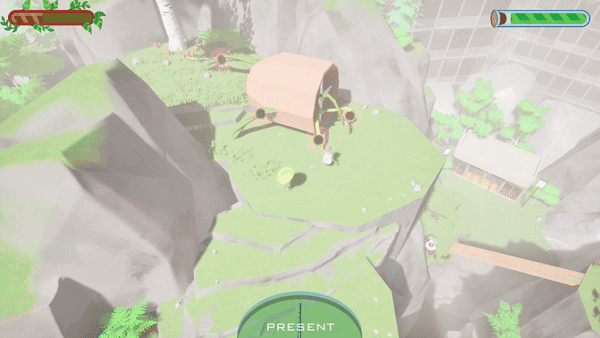
OPPORTUNITIES FOR FUN
Chronosynthesis has many comedic elements and inside jokes, from the characters, to the pylon crabs.
I built in moments to surprise players and give them a chuckle. One example is this overgrown flower pot launcher.
If a player is standing in front of it when all of the temporal anomalies are destroyed, they will be launched instantly across the chasm.
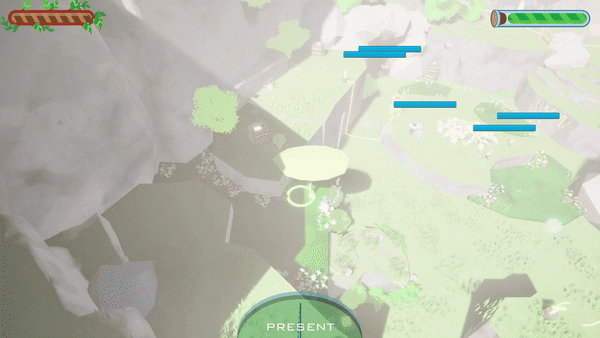
COMBAT ENCOUNTER DESIGN
The main combat encounter space in the Crash Site Exterior follows the same rules as the combat encounter from the Crash Site Interior:
-
Reward observant players with an advantage (bombs can be strategically used to kill all of wave 1 and half of wave 2)
-
Create comfortable spaces with the player and enemy numbers in mind
-
Communicate where the next wave(s) will come from
-
Clearly show the exit and escape routes(s)
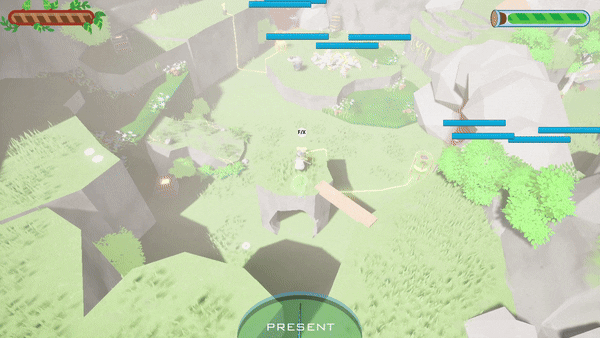
SECRET PATHWAYS
Tunic (2022) was a major inspiration for the team during development.
It's a game with many secret pathways found only by the most observant and adventurous of players.
The main combat encounter zone in the Crash Site Exterior includes a secret path which can be used to skip a difficult section of it.
I decided to balance this out with 2 guaranteed additional pylon crab encounters.
SCRIPTING AND OTHER CONTRIBUTIONS
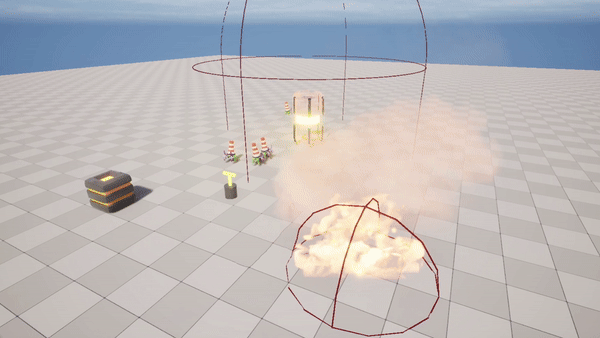
BLUEPRINT SCRIPTING
I always enjoy working with Blueprints. We had dedicated programmers for our characters and enemies, but I was happy to contribute these level design objects.
The following is a list of some of the things I scripted:
-
Bomb
-
Bomb Detonator
-
Bomb Drop Manager
-
Character Launcher
-
Combat Training Module
-
Health Crate
-
Elevator
-
Enemy Healthbar Volume
-
Enemy Wave Manager
-
Enemy Wave Wall
-
Fire Hazard Knockback
-
Foliage Blocker
-
Level Sequence Player (2 variations)
-
Per Character Blocker
-
Sliding Ship Doors
-
Tutorial Holo Bot
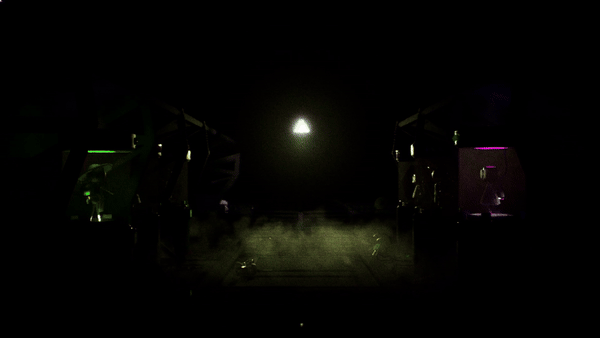
CINEMATICS
I worked on 3 cinematics, but the intro is the one I'm most proud of.
My first pass was a little too 2001: A Space Odyssey. My course instructor encouraged me to shorten it to the current length and it feels a lot better now.
MODELING
Due to constraints in the art department, and in an effort to make my level look less like a blockout, I decided to crack open Maya and model the key structural elements of my level.
For both the Crash Site Interior and Exterior, my workflow was to first import the entire blockout for scale.
I set up the UVs for the panning textures in the ship and used references to build a low-poly version of the Mont Royal radio tower.
REFLECTIONS
I had a great time working on this game. I'm proud of myself and my classmates for delivering what we did in 3 months alongside our other classes and extracurriculars. With 20 contributors it was a much different experience than my previous academic work. It took longer to get up and running and the decision making process was often slower due the amount of input and conflicting notions about priorities.
If I were to start the project again, I would:
-
Work closer with my fellow level designers
-
I would've liked to achieve a more cohesive feeling with the level design. As a team, we had weekly sprint reviews where we showcased our progress. These were helpful to keep everyone informed, but often led to long, drawn out level design discussions including teammates who weren't level designers. Next time, I would reserve sprint reviews as a showcase and schedule a separate level design exclusive meeting to more critically discuss our thinking and vision for our respective levels.
-
-
Be more critical of core game mechanics at the brainstorming / prototyping phase
-
The decision to push forward with the time travel mechanic was a big one. Time travel meant that we had to build levels with 2-3 time periods. This led to a bunch of technical and art overhead.
-
The process of planting a plant, watering it, and then time traveling to make it grow, really slows down the pace of gameplay. I found myself designing to provide the player with "secret" alternate methods of progressing forward for players who wanted to avoid having to time travel.
-
One option would be to make the plant growth instantaneous after watering, scrapping the need to time travel altogether. Another option would be to remove the need for both players to have to "agree" to time travel. Instead either player could instantly switch time. This might create some fun scenarios as well!
-








